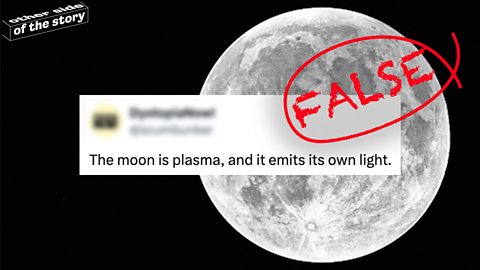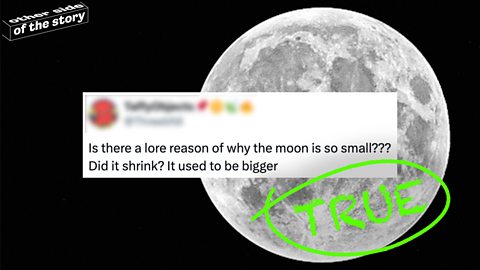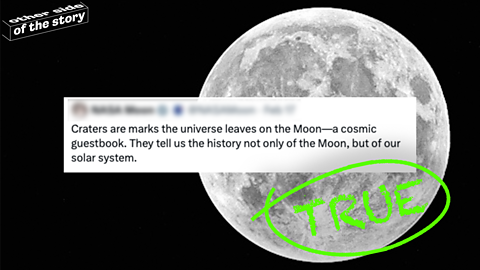From the ancient cultures who worshipped the Moon, to the modern moon landing conspiracies, humans have had a fascination with Earth's only natural satellite for thousands of years.
And it’s just as popular today. On socials, there are a massive 48 million posts on Instagram and 5 million posts on TikTok.
But not all the chat on social media can be believed…

The Moon doesn't make it's own light. We can see the Moon so clearly because it reflects sunlight. Half of the Moon is brightly lit by the Sun, the other half is in darkness. The Moon is made up of rock and metals, not plasma, which is a hot, ionized gas composed of positively charged ions and free electrons. The Sun is made from plasma.

The Moon is shrinking very gradually. A huge amount of heat was generated when the Moon was formed in what scientists think was a collision event around 4.5 billion years ago. The interior of the Moon has been cooling down ever since, which has caused the Moon to shrink by around 50 metres over the last several hundred million years!

Lunar craters are created when an asteroid, meteoroid, or a comet, plunges into the Moon’s surface. Some craters on the moon are more than 186 miles in diameter, that's about the distance it would take to drive from London to Wakefield in Yorkshire! There’s no liquid water or wind on the moon, so evidence of the impacts has been preserved for billions of years. Scientists use a technique called crater-counting to identify the age of the Moon's surface.
Moon misinformation
With so much curiosity and intrigue about the Moon, it could be quite easy for misinformation to be spread and shared online. When you read and watch content on your socials, think before you share. Don't believe everything you see, hear or read, including conspiracy theories. Do your own research and check that the information comes from trusted sources and experts.
This article was published in March 2025.

Not sure if the news you’re seeing on social media is true or false? Can you always tell if the things you see online are real or fake? Learn how to get the other side of the story with our quizzes, videos and explainers.


